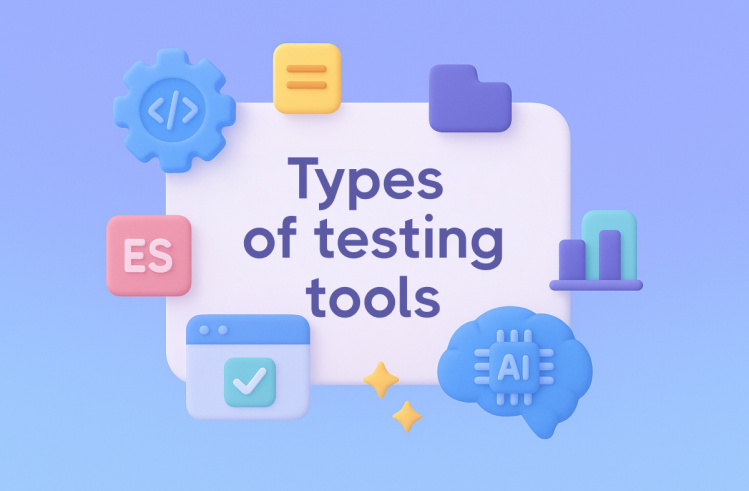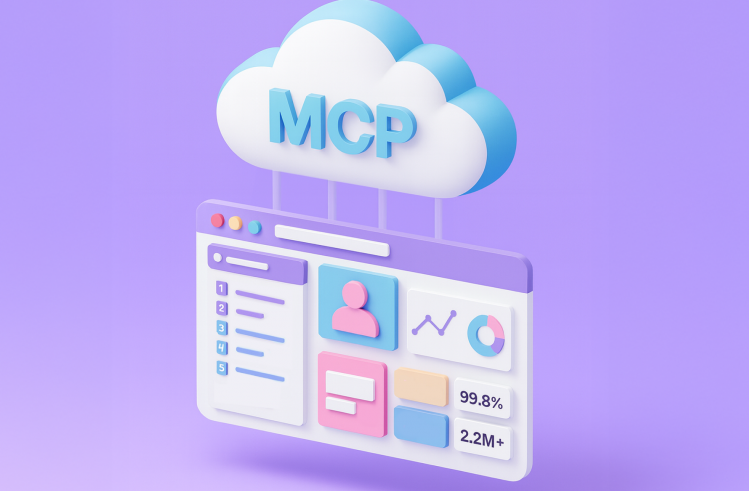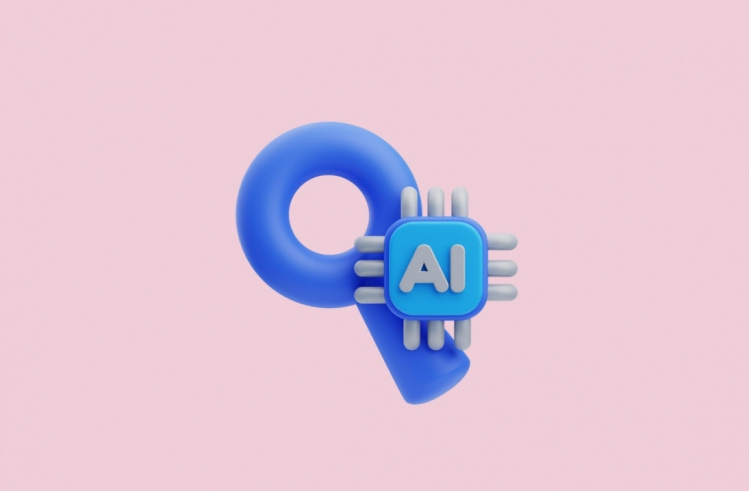Companies are moving from large code deployments to small and Agile-driven releases, as thanks to the fast-releasing Agile approach, they can respond more quickly to changing market conditions, improve product performance, and minimize product risks.
In addition, with CI\CD in place, teams can automate code changes, run tests, and deploy software applications faster. Smaller releases allow them to get continuous feedback, identify bugs early and implement improvements faster. Moreover, dividing large projects into more manageable tasks speeds up productivity among the teams and reduces complexity.
Let’s discover how Bitbucket designed by Atlassian platform supports this approach 😃
What is Bitbucket?
Bitbucket is a cloud-based service that allows developers to host and manage their repositories – from tracking to controlling code changes.
Bitbucket’s intuitive interface makes Git version repositories accessible even to novice coders and enables whole teams to collaborate and create projects, test and deploy the code. Both private or public Bitbucket repos you can choose. Anyway, it offers flexible permissions for the teams to work securely. Security vulnerabilities are excluded from the Bitbucket side, ensuring your app code stays protected. Also, Bitbucket integrates with CI\CD pipelines to enable automated testing and deployment directly from the repository.
Bitbucket Key Features: What are they?
Below we have outlined some specific Bitbucket app features to see how each feature may benefit your team:
- Unlimited Private Repositories. Bitbucket offers free unlimited private repositories for individuals or small teams with a maximum of five members.
- Jira and Trello Integration. Being an Atlassian product, it integrates seamlessly with other Atlassian tools, such as the issue-tracking Jira service management and project organization tool Trello to help your teams work more effectively.
- Collaborative Coding. A Bitbucket instance offers a range of features, including pull requests, inline comments, and code reviews and allows software engineers to collaborate on code changes in Bitbucket repositories.
- Bitbucket Pipelines. You can speed up your development process with built-in CI/CD to automatically build, test, and deploy your projects. It helps you reduce human error and concentrate on core tasks.
- Deployment History and Visibility. In the deployment summary, you can easily see what version of your project is deployed, along with other important details.
- Configuration as Code. You can store and manage your build configuration in one .yml file and make the configuration process simpler.
- Git Large File Storage Support. Bitbucket offers the Git Large File Storage (LFS) extension to replace large files with pointers and help you get shorter clone times.
- Security features. With Bitbucket’s IP whitelisting and 2-step verification requirements, your code is protected from unauthorized access and modifications.
- Bitbucket Server. It offers all the essential features of Bitbucket Cloud, plus additional capabilities for managing the code repositories on-premises.
✅ Note our team is working on the Jira Plugin.
Plugin is a powerful bidirectional tool for linking and tracking all test-related activities with requirements issues, stories, and epics for clear traceability. Its Agile & CI\CD workflows’ properties allow even non-tech team members like Manual QA or Business Analytics to launch pre-configured Bitbucket CI\CD pipelines directly from Jira. Rich widgets on the Analytics Dashboard visualize Test Results.
Bitbucket CI\CD Pipeline: How It Works
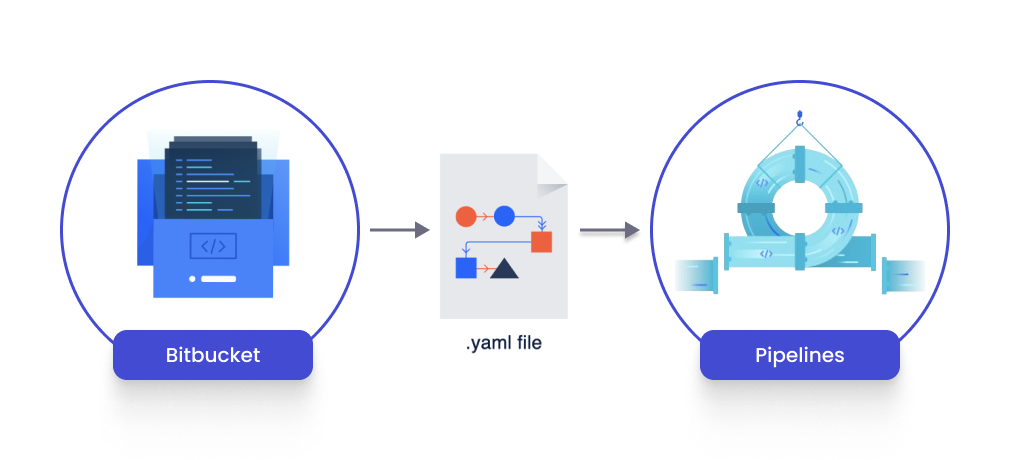
The image shows a high-level CI\CD flow using Bitbucket Pipelines. Let’s take a closer look at each part below:
- Bitbucket (Code Repository). Firstly, a software developer pushes code or makes changes to a Bitbucket repository hosted on Bitbucket where code is stored and managed.
- YAML Configuration File (bitbucket-pipelines.yml). Secondly, in the .yaml file, you can find the configuration for your CI\CD pipeline. When changes are pushed to Bitbucket, the pipeline is triggered based on the rules defined in this file (e.g., building the code, running tests, or deploying to a staging environment).
- CI\CD Pipelines Execution. Thirdly, the CI\CD pipeline begins running based on the instructions in the bitbucket-pipelines.yml file, including the following:
→ Building the code
→ Running automated tests
→ Deploying to different environments (like staging or production)
To sum up, Bitbucket CI\CD pipelines speed up development and improve quality. By automating build, test, and deployment processes, teams can deliver software faster and with fewer bugs. Also, you can explore the Bitbucket documentation to discover the full range of capabilities available.
Why development teams choose Bitbucket Integration?
Bitbucket integration works best when it easily aligns with the company’s existing workflow and technology stack. Here is why teams opt for Bitbucket:
- Teams can secure their code in free private repositories. Even small teams can collaborate without extra costs.
- Teams can better collaborate using pull requests, inline code reviews, and commenting to get faster feedback and produce code of high quality.
- By using pull requests, teams can efficiently deploy code changes to the remote repository and manage the entire project within Bitbucket.
- With branch permission controls, teams can manage repository settings in Bitbucket to regulate workflows and protect critical branches to maintain stable releases.
- Teams can scale easily, whether working on personal projects or large enterprise applications.
- Teams can link commits with Jira issues automatically to improve visibility and project management across the development lifecycle.
- Teams can extend Bitbucket’s capabilities by integrating apps for time tracking, notifications, or testing tools.
- Teams can choose between Bitbucket cloud or on-premises solutions and align the platform with their infrastructure and compliance needs.
- Teams can monitor repository activity and performance using built-in analytics and reporting tools.
- Teams can share reusable code and documentation through snippets and wikis to foster knowledge sharing and boost productivity.
- Teams can deploy changes in the code directly through pull requests and thus carry out all work in the project with just one tool.
Benefits of CI\CD workflow with Bitbucket
Here we are going to overview the benefits the CI\CD with Bitbucket provides:
- Improved Code Quality. With Bitbucket integration, you can automatically run tests on every code change to catch bugs early and let everyone use the same style when producing code and make it easier to read and understand.
- Reliable Deployments with Minimized Risks. With Bitbucket, you can automate deployments that speed up the release of new features and reduce the risk of mistakes.
- Test Automation and Real-Time Collaboration. Thanks to Bitbucket, you can automate testing to present changes to code in real time and make it easier for everyone in the team to work together.
- Real-Time Monitoring and Better Analysis. With Bitbucket, you can get quick information about the status of builds, tests, and deployments, and create reports to track performance and detect bottlenecks.
- Automated Security Testing. Thanks to Bitbucket, you can run automated tests to find problems in the code early and make sure deployments are secure.
Reasons to Integrate Bitbucket with an External Test Case Management System
When integrating Bitbucket with an external TCMS, you can improve your software development and testing processes. Here are some key reasons why this integration is beneficial:
- Efficient Test Case Management. You can store test cases in a centralized repository, track changes with version control, and facilitate collaboration through a shared platform for creation, review, and execution.
- Effective Test Execution and Reporting. You can trigger test cases directly from the platform, generate comprehensive reports for in-depth analysis ( pass/fail rates, coverage, execution time, etc.) and link test cases to specific code changes or requirements.
- Streamlined Test Coverage and Better Quality. You can test the most important parts to minimize critical bugs and reduce the risk of serious problems. Also, you can save time and effort by creating reusable test cases to execute across different releases or projects.
- Boosted Team Productivity and Cooperation. You can keep everyone on the same page about the status of test cases, test execution results, and any issues that arise. Also, you can increase transparency in the testing process by allowing stakeholders to better understand the progress and potential challenges.
- Streamlined Testing Workflow. You can speed up the testing process and reduce the time it takes to execute tests and analyze results by automating repetitive tasks – test case execution and reporting to focus on more important activities.
To sum up, Bitbucket and TCMS integration can improve your team’s testing process. It helps not only manage test cases efficiently and automate testing, but also provides clear reports that lead to quicker time-to-market and increased productivity.
Integrate Bitbucket With Test Management: Guide
#1: Start A Project And Create Test Cases
Before linking the CI server with the test management system, a project must first be created.
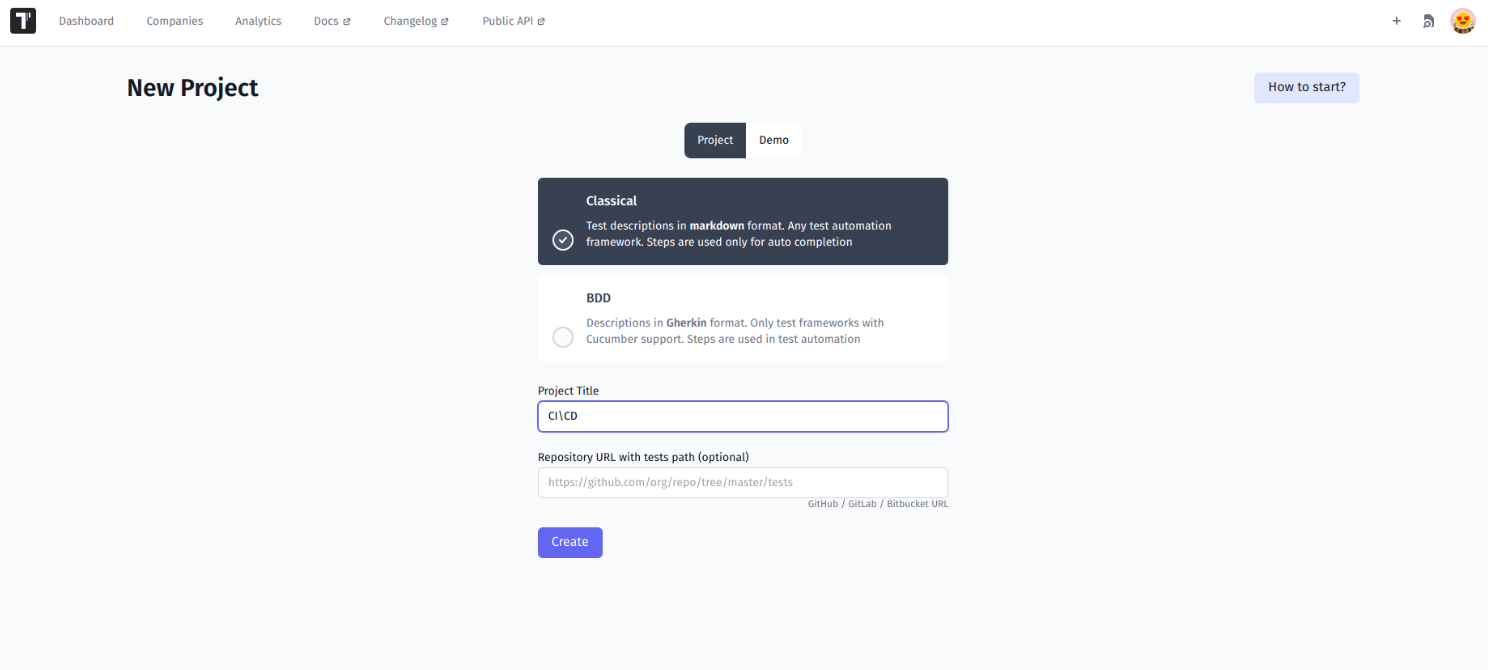
Once the project is set up, the next step is to locate the automated tests and import them into the project. Only copy and paste suggested comands.
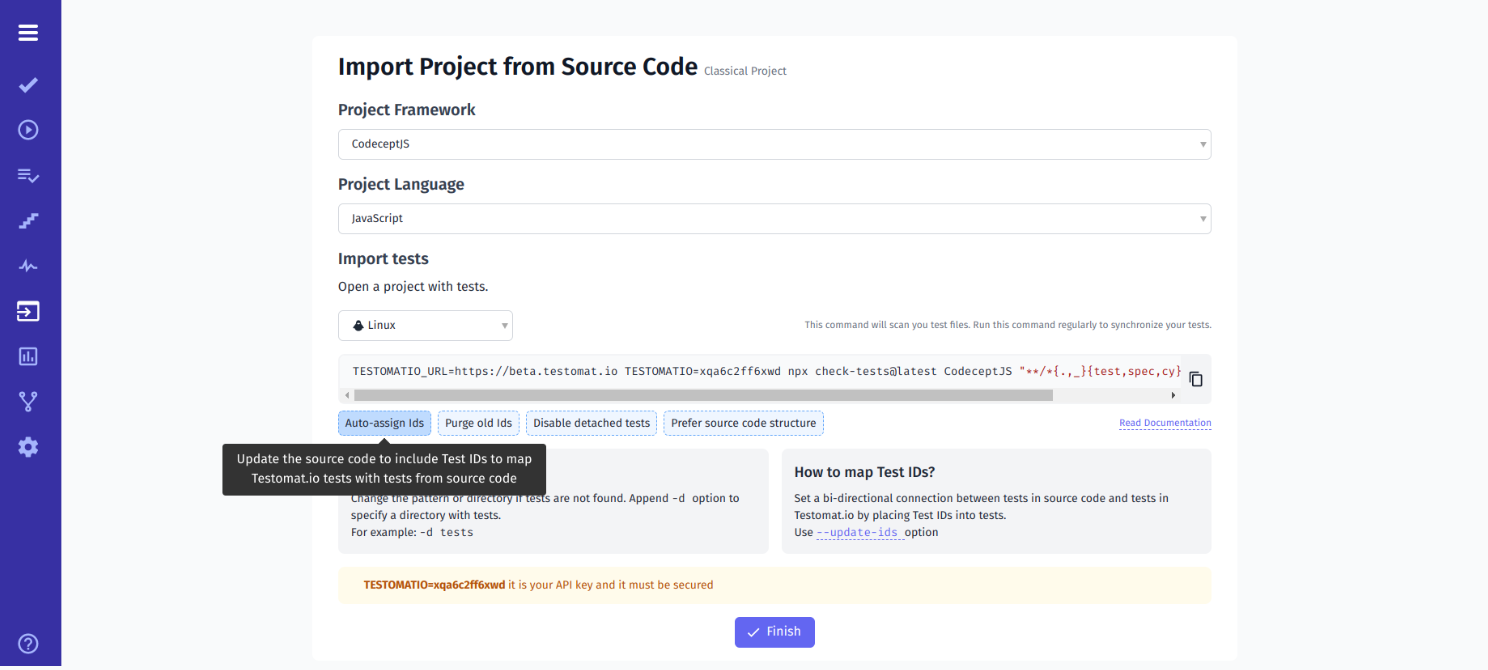
#2: Link Testomatio IDs To Automated Tests
When assigning testomat.io Ids for imported tests, it’s important to take into account what frameworks are used. Here are the commands:
check-testscommand for importing tests with--update-idsfor JS-based frameworks.check-cucumbercommand with--update-idsthe command for Cucumber framework.
Maintaining consistent test case IDs during export and import is crucial. So don’t forget to verify the accuracy of test case IDs to avoid errors.
TESTOMATIO={apiKey} npx check-tests <framework> <pattern> --update-idsWhile testomat.io automates the creation of unique IDs for your test cases, eliminating the need for manual effort, it’s still important to ensure proper ID mapping when importing tests. Only by double-checking all IDs can you guarantee a smooth transition and avoid potential issues. More detail in the official Documentation.
#3: Configuration of Continuous Integration Settings
Next, you’ll need to integrate your test project with your CI\CD pipeline. To do this, you should access the Project Dashboard and locate the Continuous Integration tab. After then Select Bitbucket from the available options.
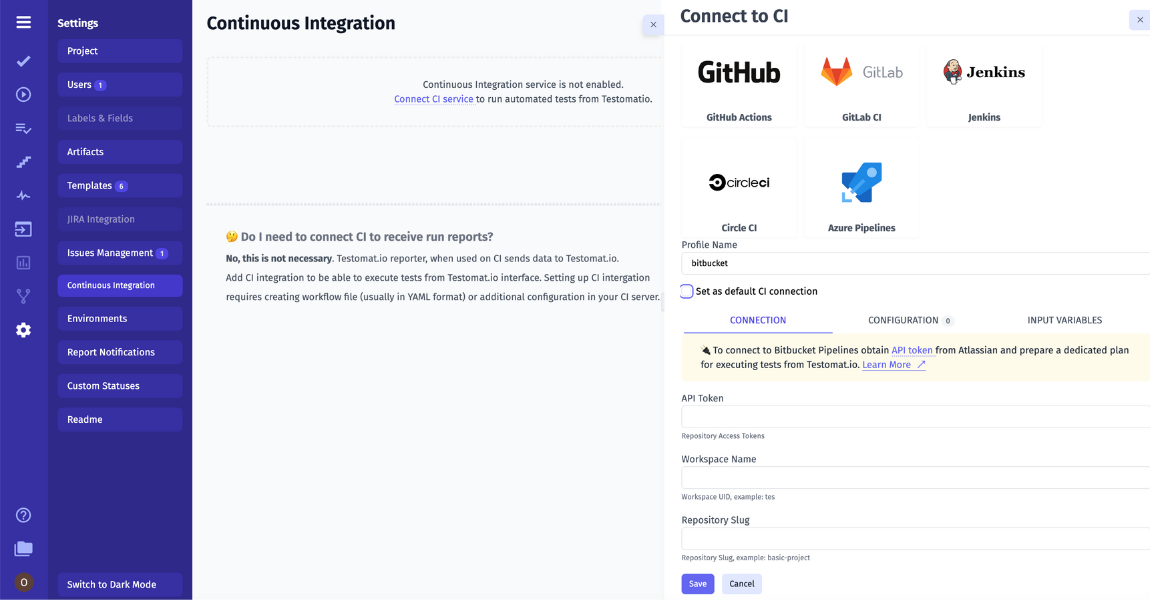
Refer to the Bitbucket account Atlassian platform to generate a Bitbucket API Key. API token will be added on the current user Bitbucket Repository Settings page. By default, the Key is in SSH format if to save it in file.
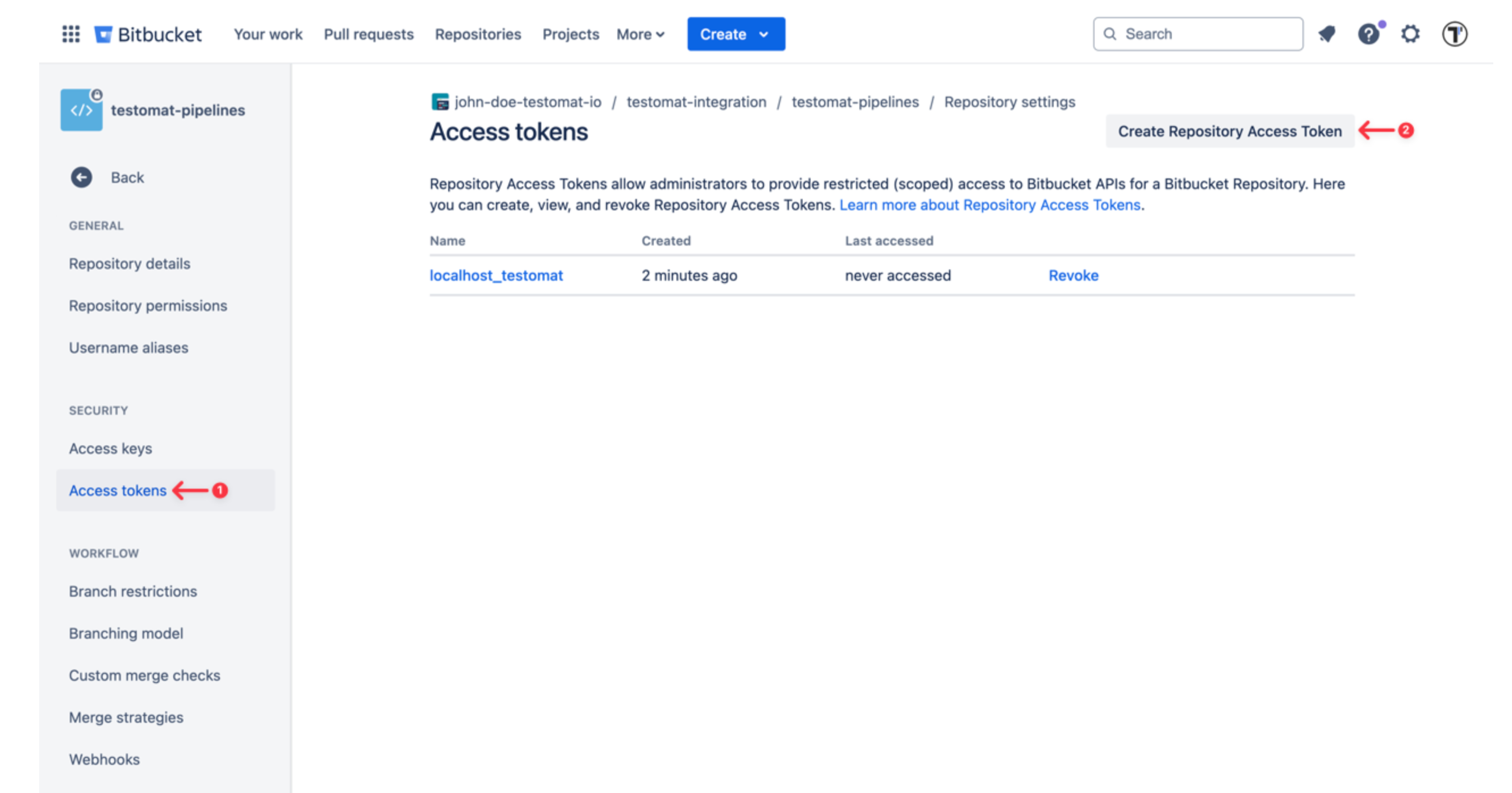
Then create a new Bitbucket project by selecting the button Create on the top and Project.
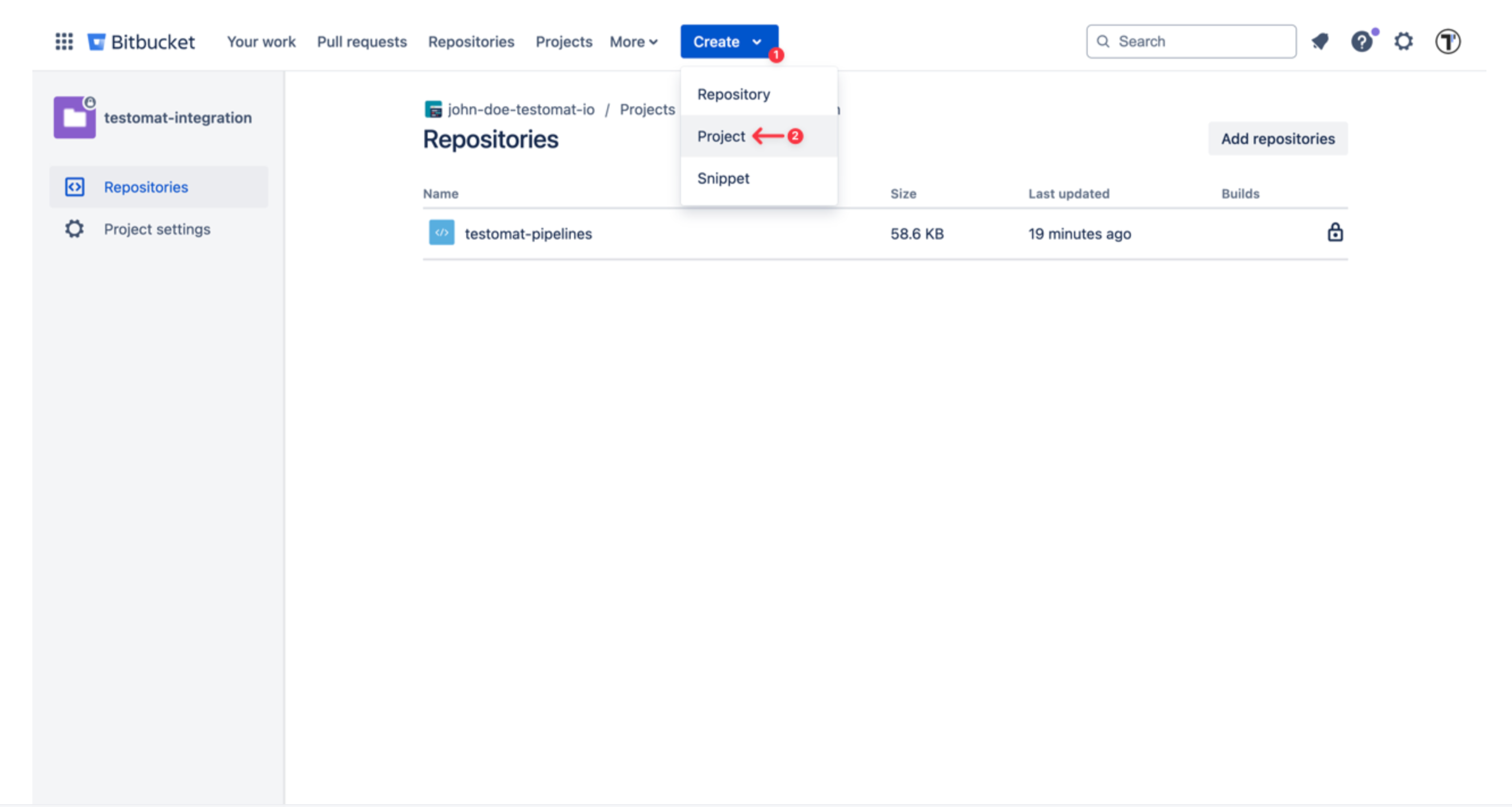
Now make this build parametrized, we try to describe all needed Bitbucket settings in detail.

#4: Job Bitbucket Parameter settings In CI To Build & Test
You need to ensure your workflow is used exclusively within the testomat.io test management system. Thus, include the necessary parameters in your code as a string and save your changes.
- export TESTOMATIO="${Testomat.io}"
- export TESTOMATIO_URL="${Testomat.io_url}"
- export TESTOMATIO_RUN="${run}"Additionally, the job should include a step where the test runner is executed with the —grep option option and TESTOMATIO environment variables passed in.
For instance: - npx codeceptjs run-workers 2 --grep "${grep}"
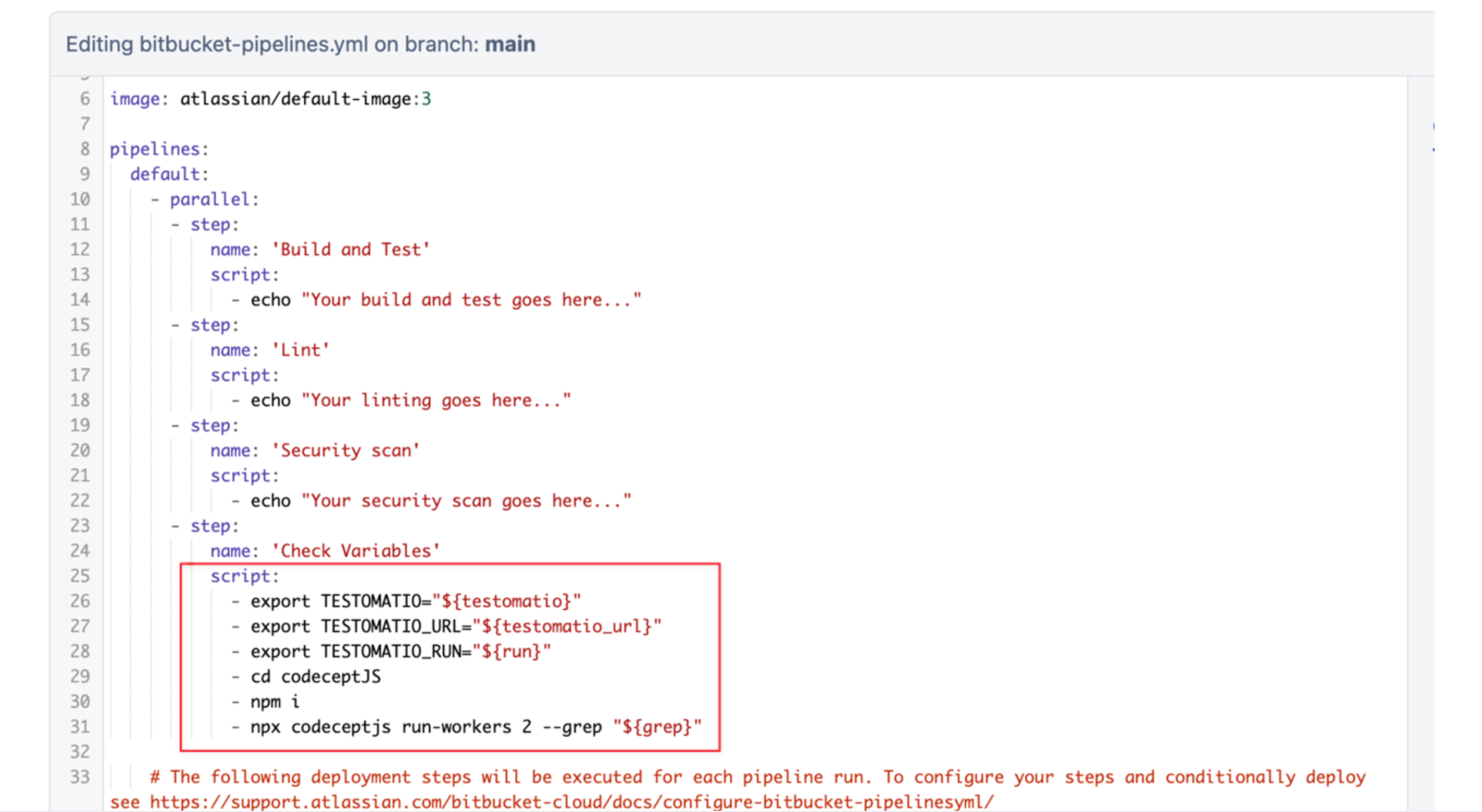
If you use on-premise Testomatio setup you will also need to add a URL parameter Testomat.io_url
If the connection is successful, a success message will appear after clicking the test connection button.
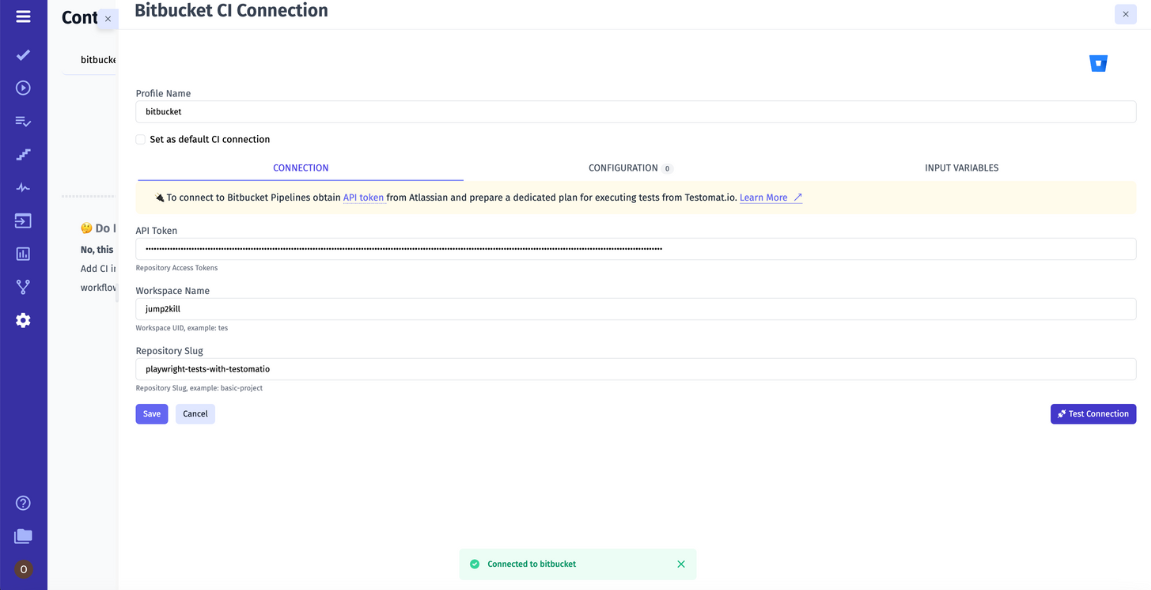
#5: Execute Tests And View Results
Once you’ve successfully set up Bitbucket, executing automated tests goes without effort. You need to simply open a test, select Run in CI, and click the Launch button.
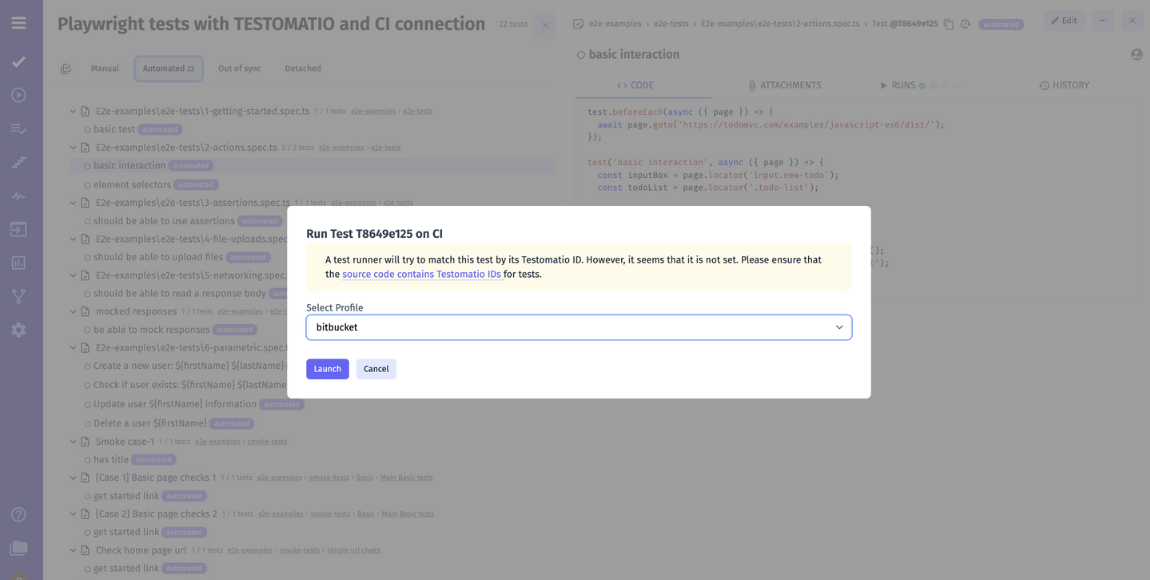
As a result of test execution, you can receive real-time reports even after a single test run. Additionally, test results displayed in the test management tool can be easily shared with your team through a secure public link.
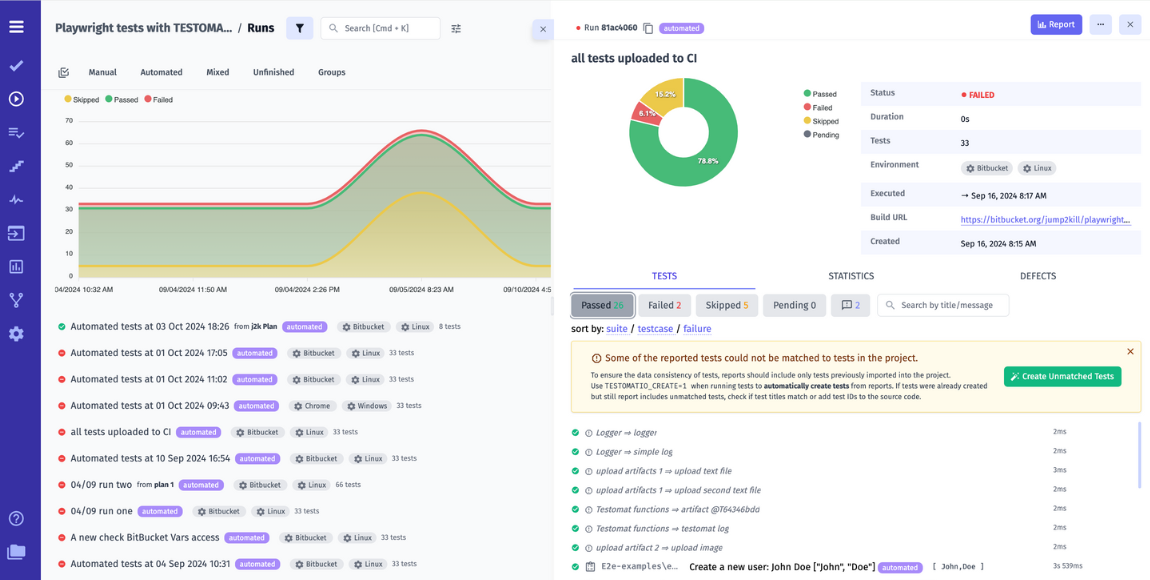
With visual test results, teams can not only draw conclusions quickly and easily but also customize the graphs to gain insights into slow, failing, or flaky test cases presented in numbers and many more…
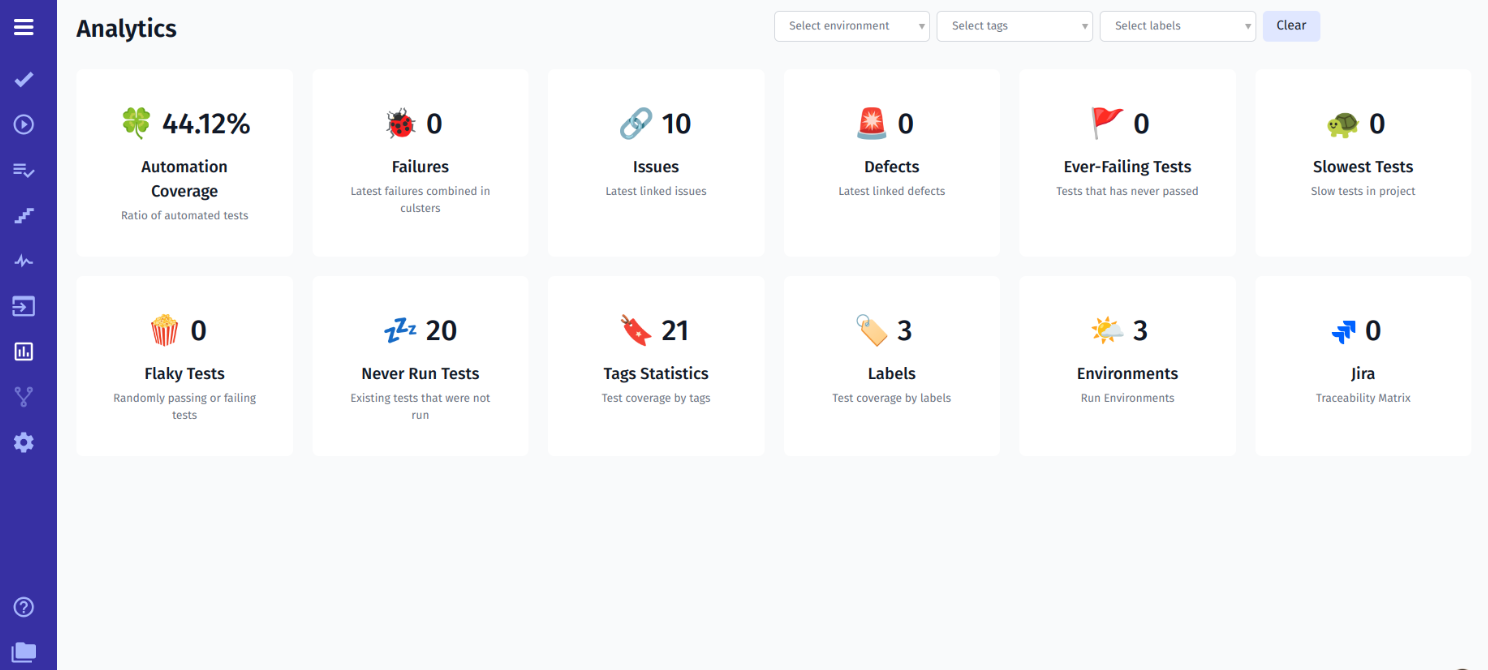
This transparency let QAs, BAs, PMs, and stakeholders discover facts and figures, detect failures promptly, and make necessary improvements to accelerate product development and time-to-market.
You may also explore these integration functionalities:
Bottom Line:
👀 Ready To Improve Your Testing Process With Bitbucket Integration?
In the modern software development world, software and testing teams look for agility and efficiency. When choosing Bitbucket, you can take into account the team’s specific needs, existing workflows, and the level of integration required with other tools. Only by assessing the unique features, ease of use, scalability, and costs associated with the tool can you make a choice and integrate Bitbucket into your project management and development workflow.
By applying Bitbucket’s CI\CD integration, they can not only automate repetitive tasks and speed up development cycles but also increase visibility with real-time insights and reduce the risk of human errors.
Overall, Bitbucket integration can be a valuable tool for businesses of all sizes. When using Bitbucket effectively, teams can improve their development processes and increase productivity while businesses can achieve their software development goals more effectively.
If you have any questions about Bitbucket integration, do not hesitate to contact us to explore how it can benefit your team.


